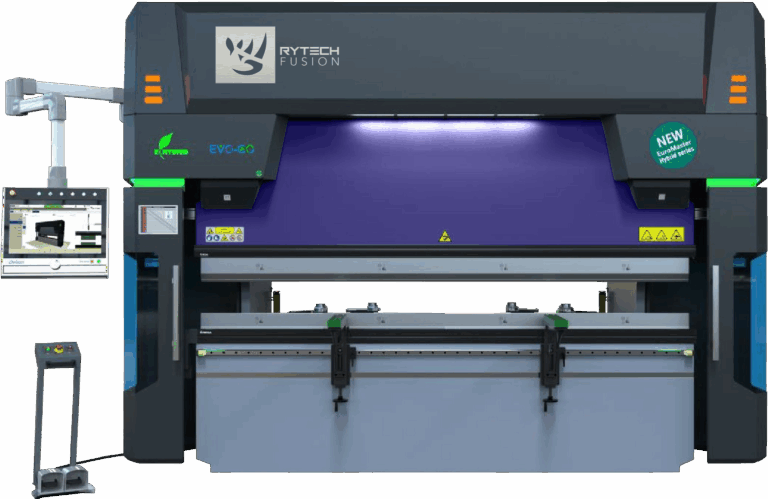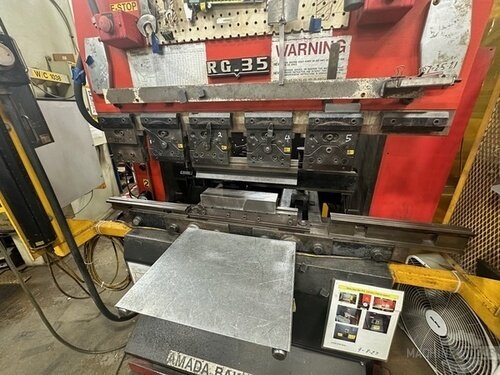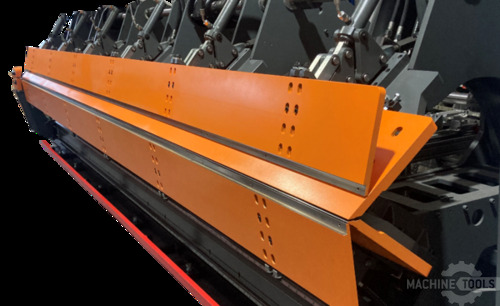Growing up in southern Chicago, I learned early that the best results come from rolling up your sleeves, listening carefully, and delivering what people truly need—not just what you have on hand. That mindset shaped my career, from my first days in the field to my current role as Regional Sales Executive at Mac-Tech. Every week, I work side-by-side with roofing contractors, metal fabricators, and plant managers across the Midwest and beyond, guiding them through critical decisions about folders, shears, slitters, decoilers, roll formers, and more. My goal is to help shops of every size achieve precision, speed, and profitability in their production lines—whether they’re running a single shift or a fully automated coil-fed operation.
Leveraging Experience: Optimizing Coil-Fed Production for Maximum Efficiency
Through hundreds of site visits and production line audits, I’ve seen what separates high-efficiency shops from the rest. The most successful fabricators have one thing in common: they treat every machine as a link in a chain, not a standalone investment. Upgrading to CNC folding—whether up or down folder—can be a game-changer, especially in coil-fed environments where throughput and repeatability drive your margins.
Automation is the linchpin. By integrating folders with decoilers, slitters, and panel benders, you can cut manual handling, reduce labor costs, and achieve tighter tolerances part after part. For example, pairing a servo-driven down folder with an automatic slitting line lets you move directly from coil stock to finished panels with minimal operator intervention. This not only boosts speed but also slashes scrap and rework, making your entire workflow more predictable and cost-effective.
Evaluating Up vs. Down Folder Performance in Metal Folding Operations
When customers ask about up versus down folders, I always start by analyzing their part mix, material thickness, and shop layout. Up folders (where the folding beam moves upward) are often preferred for lighter gauge material and smaller parts, especially when handling intricate profiles or short flanges. They typically offer excellent visibility and ergonomic operation for manual setups.
Down folders, on the other hand, shine in high-volume, coil-fed production. Their gravity-assisted design means finished parts drop away cleanly, improving cycle times and reducing the risk of scratching or marking sensitive finishes. Many modern down folders feature advanced backgauge systems and servo drives, enabling faster setups, tighter repeatability, and seamless integration with upstream equipment like slitters and decoilers.
In my experience, down folders are the go-to for shops producing long panels, roofing profiles, or architectural trim at scale. Up folders are ideal for custom fabrication, prototyping, and operations where flexibility and operator access are paramount.
Meeting Specific Fabrication Demands: Slitting, Forming, and Folding Considerations
Every shop faces unique challenges, from the need to minimize coil waste to managing tight delivery deadlines. That’s why I always encourage customers to map out their full process—from coil slitting to final folding. For example, if you’re producing standing seam panels, pairing a precision slitter with a servo-driven down folder can yield consistent results, fast changeovers, and minimal scrap.
For shops handling diverse projects, a combi-beam folder can provide the ultimate in versatility, switching between box and panel profiles with minimal downtime. Double folders are another excellent choice when you need to form both up and down bends in a single pass, dramatically reducing handling and cycle times.
No matter the workflow, investing in integrated controls and automated part handling pays dividends in reduced labor, fewer errors, and a smoother transition between slitting, forming, and folding steps.
1995 Kaltenbach KKS 400 EC NA
- @ 90 Degrees 9.5″ X 3.14″
- @ 45 Degrees 7.28 X 2.36″
- Rounds 5.9″
- Blade Size 17.7″
1999 HACO OMATIC 2112 TURRET PUNCH
- # of Turret Stations: 12
- Weight: 14.5 T
- Punching capacity: 22 T
- Max. sheet thickness: 6 mm
Upgrading Machinery: Key Factors for Improving Speed and Reducing Waste
Deciding when and how to upgrade is about more than just machine age or breakdowns. I look for signs such as bottlenecks at the folding station, excessive rework, or rising labor costs. Modern CNC folders—especially those with servo drives and advanced backgauges—can increase throughput by up to 40% while maintaining tolerances of ±0.5 mm or better.
Key upgrade factors include:
- Automation compatibility: Can the new folder seamlessly link with your existing slitter or coil line?
- Control systems: Are you able to program complex bends, store part libraries, and track productivity?
- Material handling: Does the folder accommodate your part sizes and stack finished pieces efficiently?
- Waste reduction: Are you seeing tangible improvements in material yield and less scrap?
Often, the ROI on a new folder or slitter comes not just from speed, but from the ability to take on higher-value work, reduce overtime, and eliminate costly errors or remakes.
Real-World Solutions: Success Stories in CNC Folding Efficiency
One Midwest roofing manufacturer recently upgraded from a manual up folder to a fully automated servo-driven down folder, integrated with a coil-fed slitting line. The result: a 35% increase in daily output, a 20% reduction in labor hours, and virtually zero rejected panels due to folding errors. Another client, a custom metal fabricator, added a combi-beam folder to tackle a wider range of profiles. This flexibility allowed them to win new contracts and shift from low-margin commodity work to high-value architectural trim.
In both cases, the key was matching the machine to the workflow—not just buying the latest technology, but investing in a system that fits their real-world needs. That’s the approach I bring to every project, from initial consultation to training and long-term support.
Frequently Asked Questions
When is the right time to upgrade a roll former or folder?
If you’re experiencing excessive downtime, rising maintenance costs, or struggling to meet delivery schedules, it’s likely time to consider an upgrade. I also recommend a review if you’re expanding your product line or looking to improve part quality and consistency.
How do servo-driven folders compare to hydraulic systems?
Servo-driven folders offer faster cycle times, quieter operation, and tighter repeatability. They also require less maintenance and energy, making them ideal for high-volume or precision work. Hydraulic folders can still be suitable for heavy-gauge or low-volume applications.
What’s the difference between a combi-beam and double folder?
Combi-beam folders allow you to switch between different tooling profiles (box and panel) on the same machine, boosting versatility. Double folders can form up and down bends in one pass, which is a huge advantage for complex parts or high-volume panel production.
What are signs a roll forming line is no longer cost-effective?
Frequent breakdowns, excessive scrap, slow changeovers, and difficulty keeping up with demand are all red flags. Upgrading can often pay for itself quickly through increased throughput and reduced waste.
How does automation impact labor requirements?
Automation reduces the need for manual handling and allows operators to oversee multiple machines, lowering labor costs and minimizing errors. It also makes your operation more scalable and less sensitive to staffing changes.
Can I integrate new folders with my existing coil and slitting equipment?
Most modern folders are designed for seamless integration with upstream and downstream equipment. I always assess compatibility during the planning stage to ensure a smooth upgrade.
Ready to see what the right CNC folding solution can do for your business? Whether you need a walkthrough, a live machine demo, or a no-obligation upgrade quote, I’m here to help you every step of the way. Let’s talk about your goals and find the best fit for your workflow.
Get Weekly Mac-Tech News & Updates








